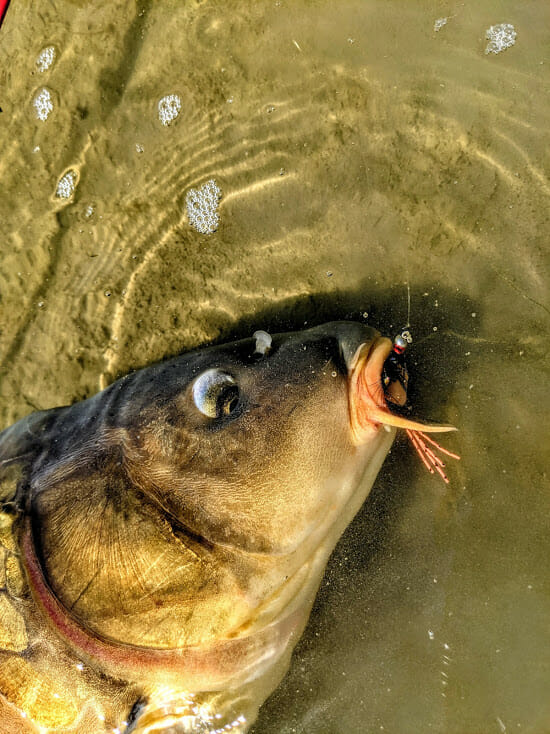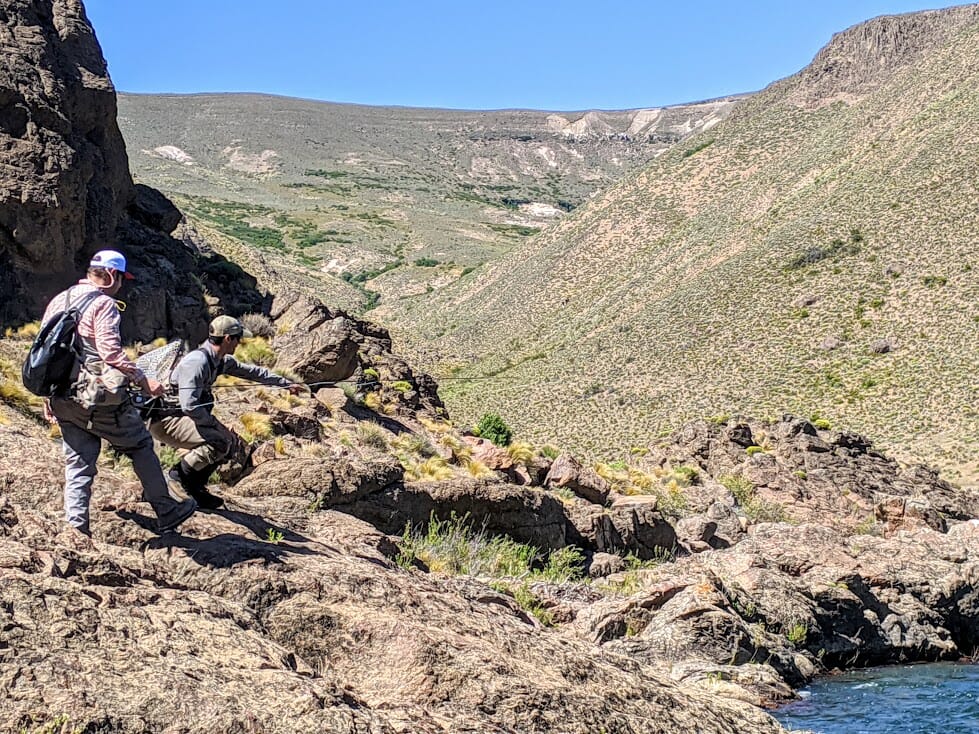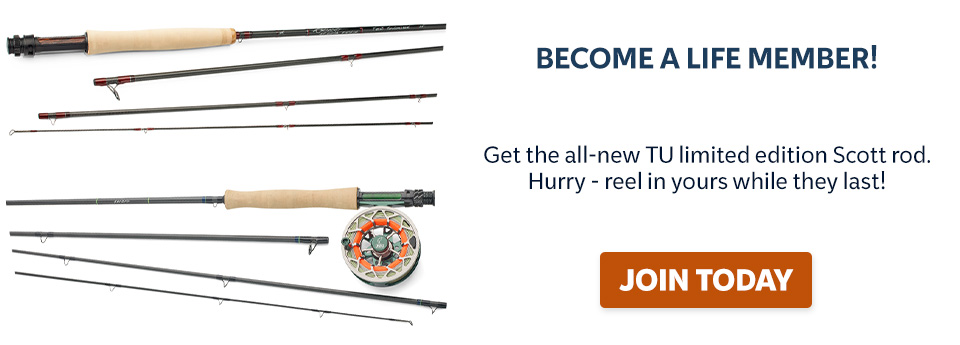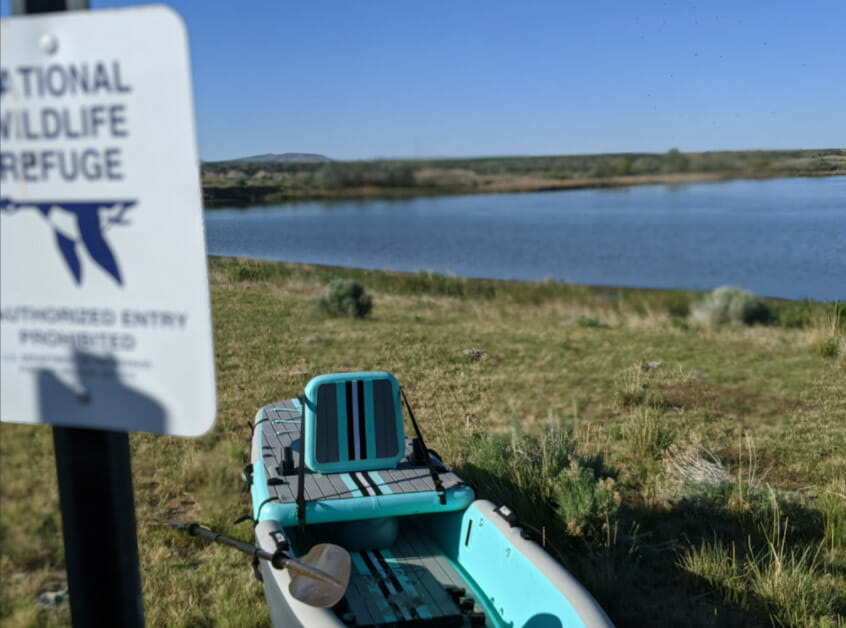National wildlife refuges are often lightly pressured and easy to get to for new anglers. Chris Hunt photo.
You have lots of options … and lots of responsibility
A lot of us fly fishers are righteously concerned with the spike in angler numbers thanks largely to the pandemic and the pressure it’s putting on our fisheries. Chances are, it’s only going to become more acute–of 3.1 million people who returned to fishing or discovered it outright in 2020 as a way of combating the COVID blues, many will stick with it.
I’m sincerely worried for many of my favorite off-the-beaten path trout haunts. Some are incredibly fragile and susceptible to abuse from new and naive anglers who may not understand long-held angling ethics or who may not be familiar with regulations put in place to protect native and wild trout.
It’s easy to suggest to new anglers that they become immediately familiar with the rules and regulations, but it will take time to teach the little things to newbies as they hit the water in greater numbers and frequency. So instead of sounding preachy, I thought it might be a good idea to lay out some options for those new to the craft and trying to figure out where to go to do some fishing — and where they might go to find surprising little pressure while they learn the ropes.
Pay attention to your state wildlife management agency
Most state fish and wildlife departments are very good about announcing when and where fish will be stocked solely for angling opportunity. Here in Idaho, Fish and Game announces specific stocking dates, numbers of fish to be stocked and exact stocking locations. No, these places aren’t likely terribly remote or full of wild trout. Instead, they’re often close to home and in some beautiful places. What’s more, these stockings increase the likelihood for success, which is important for new anglers. You may not be fishing, say, the Henry’s Fork for wild rainbows, but for those new to fly fishing, you won’t be in over your head trying to catch fish that have seen every trick in the book and have earned advance degrees in how not to be caught. In most cases (not all, unfortunately), stocked trout aren’t put in waters where they might jeopardize native trout, so don’t give too much credence to those who look down their noses at fishing for stockers. What’s more, if you like to eat the fish you catch, these are the fish you should consider first, given that they were essentially reared with that very use in mind.
It’s not all about trout

I’m lucky enough to live in the center of the universe for trout. But it’s not always about trout, even for me and my ready access to some amazing trout angling. For instance, in the spring and early summer, I really enjoy chasing smallmouth bass and big, rangy carp on a national wildlife refuge not too far from home. And yes, in most instances, fishing is perfectly legal on the many easily accessible national wildlife refuges in the United States. These amazing public lands generally offer good access and excellent opportunity. They’re also usually a little easier to get to than some high-elevation trout stream that might take a toll on your fuel bill and your car, particularly if you don’t have a vehicle built to withstand the rigors of off-highway travel.
The fly shop is about more than flies
Most good fly shops go beyond selling flies and gear to anglers. Knowledgeable proprietors understand that successful anglers will invest more in flies and equipment, so it’s wise for them to share thoughts on where those new to the sport might enjoy some success. All you have to do is ask. Don’t be shy. Not only will a fly shop employee walk around the store with you to make sure you have the right equipment, but they’ll tell you how to use it and, most importantly, where to use it. If you get the cold shoulder at fly shop, something’s wrong with the shop, not you.
The city pond beckons
Don’t turn up your nose at casting flies in the local urban pond. Not only is it likely stocked with catchable fish, it’s also a great place to practice your casts. A bonus: these little fishing gems are great places to take kids–they’re close to home, and you don’t have to pack up a weekend’s worth of juice boxes and snacks to keep the kiddos happy. What’s more, if the fishing is slow, chances are, there’s a playground nearby. If you’re lucky enough to live in a city built around a river, don’t disregard the river just because you think it gets too much pressure. In cities like Atlanta, Denver, Miami and even Los Angeles, local rivers and canals offer true trophy fishing (even if it’s not for trout–the canals around Miami offer some of the best fishing on earth for largemouth bass and imported peacock bass).
Join a fishing club (or a TU chapter)
One of the best ways to become familiar with angling opportunities in your area is to join a local fishing club or a Trout Unlimited chapter. Most clubs are beginning to have monthly meetings again (although some take summers off … because members are fishing!), and good clubs and TU chapters offer good “programming” when they do gather and meet. You’ll get to know the anglers in your community and, just as important, you’ll be able to see where fishing and conservation connect. This may be the best advice I’ve got for new anglers–your learning curve will be much steeper if you try and go it alone. Meeting and interacting with your local angling community will help you in so many ways, not the least of which is learning where to go to catch some fish.
Hire a guide

Generally speaking, fishing guides are more than just guides. They’re teachers. And, yes, their services can be a bit pricey. But there may be no better way to smooth out the fly-fishing learning curve than by hiring a guide. Not only will good guide show you some great water, they’ll also help you with your skill set–you’ll be a better angler, from your cast to your water-reading ability, after just one guide trip. Good guides will also be able to show you how to handle fish appropriately and how to release them in a way that gives them the best chance for recovery and survival. Finally a good guide will show off the resource and show you how to respect it.
Fishing, and fly fishing in particular, can be an intimidating craft to enter. But it’s surprisingly affordable and help is available if you’re serious about getting started. And, there are lots of options–you don’t have to swarm the trophy trout rivers in order to have success (in fact, I’d recommend that, until you’ve reached a certain level of competence, you don’t hit the well-known rivers in search of wise trout–you’ll likely catch more fish in an environment that might be a bit less stressful).
And if you have questions, for goodness sake, ask them. The fishing world is your oyster, but it’s up to you to seek out the opportunities and to take advantage of the resources at your fingertips.
Fishing is good for the soul, but only if you do it right. It’s supposed to be fun and it’s supposed to enrich your life. But it comes with responsibility, too. When you hear established anglers bemoaning all the “newbies,” it’s because folks aren’t being accountable … they’re not investing time in learning the subtle details of the craft and they’re not being considerate of other anglers.
Most of us want to welcome you to the craft. All of us want you to do it right so we can continue enjoying it while you learn the ropes.



